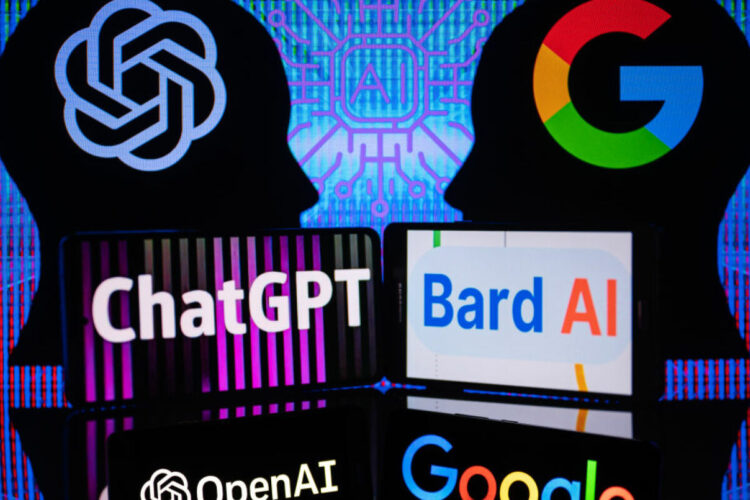
In November 2022, OpenAI introduced ChatGPT. Since then, Google and others have been trying to catch up.
Now, Google is no longer playing catch-up with its conversational AI tool, Bard. At the Google I/O conference today, they announced several updates and advancements to enhance Bard’s capabilities now and in the future.
Bard was initially announced in February but faced challenges in gaining popularity due to various reasons. One significant factor was that Bard had a waitlist with limited availability, unlike ChatGPT, which is freely accessible to everyone. However, Google is now removing the waitlist and making Bard available to a global audience.
In addition to the wider availability, Google revealed several improvements to surpass ChatGPT. These include support for multiple languages, visual responses, the option to export content, and new integrations.

At the Google I/O conference, Sissie Hsiao, VP, and GM of Google Assistant and Bard, talked about how big language models have fascinated people and transformed our perspective on the future of computing. She mentioned that Bard was initially introduced as a limited-access experiment, using a powerful yet efficient language model. The purpose was to gather feedback and make necessary improvements promptly. Since then, the team has been dedicated to working diligently and launching updates at a rapid pace.
Check: Attractive Pictures
Also read: How to use ChatGPT: A Guide to Get Started
Bard Gets AI Upgrade with Google’s PaLM 2
The term “bard” refers to a storyteller and is often associated with the famous English playwright William Shakespeare.

However, in the context of Google’s new large language model (LLM) called PaLM 2, Bard is not writing words directly inspired by Shakespeare or any other human. Instead, Bard generates its content using the capabilities of PaLM 2, which was introduced at the recent Google I/O event.
PaLM 2 significantly enhances Bard’s abilities to generate AI-driven content, surpassing its initial functionality when it was launched earlier this year.
Sissie Hsiao explained, “With PaLM 2, Bard has made significant progress in its math, logic, and reasoning skills. This improvement allows Bard to assist developers in tasks like generating code, identifying and fixing errors, and explaining code snippets.”

To further outperform OpenAI’s capabilities, Bard is taking an additional step in code generation. Hsiao announced that starting next week, Bard will provide precise code citations to help developers understand the exact origins of code snippets.
Check: Polytechnic News
Also read: How ChatGPT Can Help You in 2023
Bard Breaks Boundaries
Another drawback of the earlier version of Bard was that the responses and generated content were limited to Bard itself. However, there are exciting developments in this area.

Hsiao shared the news that starting today, Bard will introduce export actions for Gmail and Google Docs. This means that it will be simple to integrate the content generated by Bard into these platforms. Furthermore, Hsiao mentioned that Bard will offer even more possibilities with the introduction of tools and extensions.
“As you work together with Bard, you’ll have the opportunity to access various services provided by Google and extensions developed by partners. This will enable you to accomplish tasks that were previously impossible,” explained Hsiao.
Google’s Bard is getting an upgrade

Up until now, both ChatGPT and Bard have been tools that rely on text and provide text-based responses. However, Google is determined to go beyond that and surpass its competitor in another aspect.
In the upcoming weeks, Google plans to update Bard so that it can include images as part of its responses to prompts.
Hsiao expressed, “Bard’s capabilities with text are already impressive, but images play a vital role in how we learn and express ourselves. That’s why, in the next few weeks, Bard will become more visual. Both the responses it generates and the prompts you give will have a visual element.”

In addition to incorporating images, Google is taking it a step further by integrating Bard with Adobe Firefly. This integration will empower users to create completely new images directly within Bard, expanding its creative possibilities.
Check: Hubby Love Quotes
Also read: Exploring ChatGPT: The AI That Talks Like Humans
Bard’s Multilingual Expansion
Google recognizes that its users speak various languages, and in the near future, Bard will extend its language support beyond English.
The goal is for Bard to be able to understand and respond in 40 different languages. Starting today, it will already support Japanese and Korean, and more languages will be added in the coming months.

Hsiao expressed her excitement about the rapid progress being made with more advanced models. She highlighted the numerous new capabilities and the opportunity for even more people to collaborate with Bard.
VentureBeat’s mission is to serve as a digital hub for technical decision-makers to acquire knowledge about transformative enterprise technology and engage in transactions.
Conclusion
Google’s Enhanced Bard seamlessly combines accuracy, creativity, simplicity, and interest. This innovative tool simplifies complex content, making it engaging and accessible to a broad audience, redefining our approach to written content in the digital era.
Check: Collage Reviews
Also read: 10 Jobs That ChatGPT May Replace






